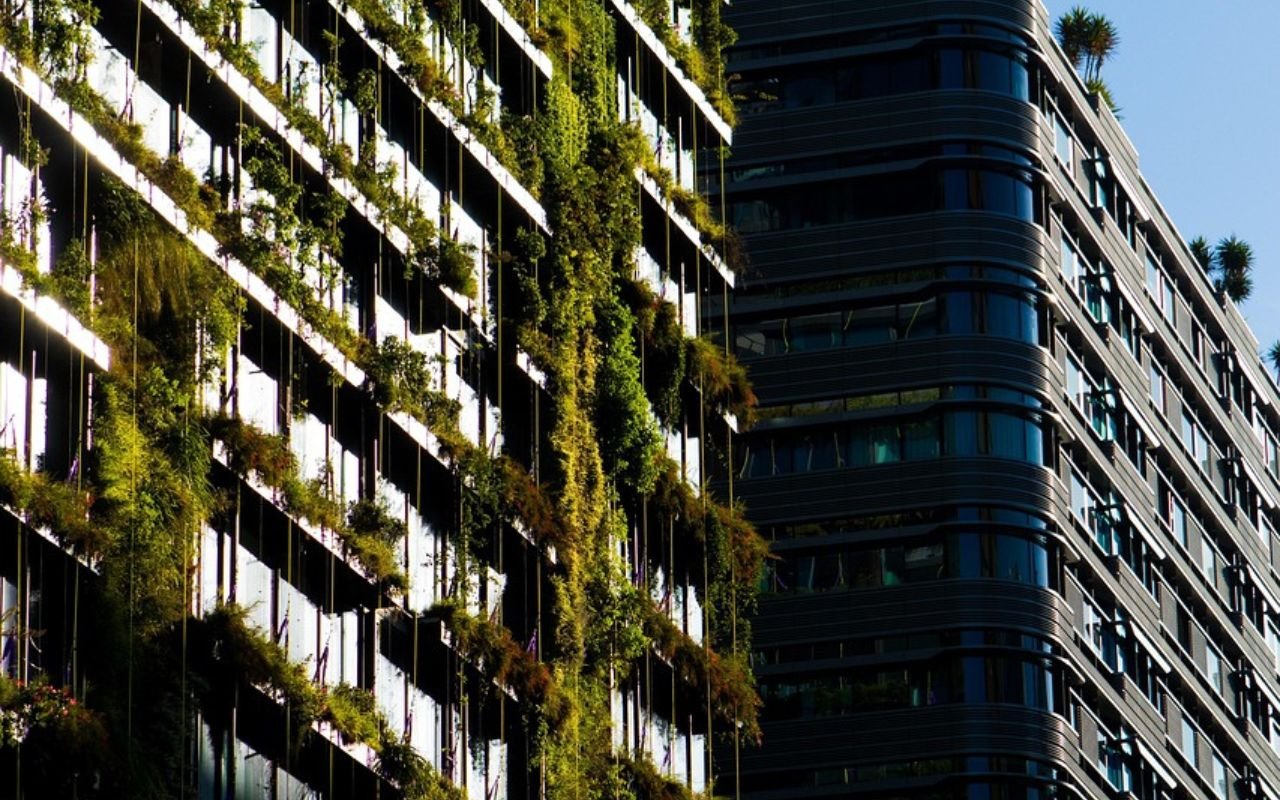Sustainable building practices are revolutionizing the construction industry. As awareness of environmental issues grows, modern construction companies are adopting greener methods and technologies to minimize their ecological impact. Sustainable building practices not only focus on conserving energy and resources but also emphasize creating buildings that are healthier for occupants and the planet. In this article, we will explore the innovative sustainable building practices that are shaping the future of construction and how modern companies are implementing these techniques to create more eco-friendly and energy-efficient structures.
The Rise of Sustainable Building Practices in the Construction Industry
The demand for sustainable building practices has increased significantly in recent years due to the growing concern over climate change, resource depletion, and environmental degradation. Sustainable construction focuses on reducing the negative impacts of buildings on the environment by using energy-efficient materials, reducing waste, and optimizing water and energy usage. By incorporating sustainable building practices, modern construction companies are contributing to the creation of a greener, more sustainable future.
Modern construction companies are increasingly prioritizing eco-friendly designs and materials. The adoption of sustainable building practices goes beyond just incorporating green elements into construction projects. It involves a holistic approach that considers the entire lifecycle of the building, from its design to its construction, operation, and eventual demolition or repurposing.
Key Elements of Sustainable Building Practices
To fully understand how sustainable building practices are shaping the construction industry, it’s essential to explore the key elements that make up these practices. From energy efficiency to sustainable materials, modern construction companies are incorporating various strategies to build eco-friendly structures.
- Energy Efficiency and Renewable Energy Integration
Energy efficiency is one of the most important aspects of sustainable building practices. Modern construction companies are incorporating renewable energy sources such as solar panels, wind turbines, and geothermal systems into their designs to reduce dependence on traditional energy sources. These energy-efficient systems help reduce the overall carbon footprint of buildings by minimizing energy consumption and utilizing renewable resources.
Energy-efficient insulation and windows are also crucial components of sustainable buildings. Proper insulation helps maintain consistent indoor temperatures, reducing the need for heating and cooling systems. Modern construction companies are adopting advanced insulation materials such as spray foam, cellulose, and rigid foam boards to ensure optimal thermal performance.
- Use of Sustainable Materials
Sustainable materials are an essential element of sustainable building. These materials are sourced responsibly, are renewable, and have minimal environmental impact. Modern construction companies are increasingly using materials such as bamboo, reclaimed wood, recycled metal, and low-VOC paints in their building projects.
Bamboo, for example, is a rapidly renewable resource that can be used in a variety of building applications, from flooring to structural elements. Reclaimed wood, on the other hand, reduces the demand for virgin timber and helps preserve forests. Additionally, using locally sourced materials can significantly reduce the carbon footprint associated with transportation.
- Water Conservation and Management
Water conservation is another crucial aspect of sustainable building practices. Modern construction companies are adopting water-saving technologies to reduce the amount of water used in buildings. Low-flow plumbing fixtures, rainwater harvesting systems, and water-efficient landscaping are some of the techniques used to minimize water consumption.
Rainwater harvesting, for instance, collects rainwater from roofs and stores it for non-potable uses such as irrigation, flushing toilets, and cleaning. By using these methods, buildings can significantly reduce their water consumption, contributing to the preservation of freshwater resources.
- Waste Reduction and Recycling
Waste reduction is a fundamental principle of sustainable building. Modern construction companies are increasingly focused on minimizing construction waste and recycling materials wherever possible. Instead of sending large amounts of construction debris to landfills, many companies are sorting and reusing materials such as concrete, wood, and metal.
Recycling construction materials not only reduces the amount of waste sent to landfills but also conserves natural resources and reduces the environmental impact of extracting and processing raw materials. In some cases, construction companies even repurpose old buildings, reducing the need for new materials and preserving historical structures.
The Benefits of Implementing Sustainable Building Practices
There are numerous benefits associated with the implementation of building practices. These benefits extend beyond environmental considerations and can also have economic, health, and social advantages for both building owners and occupants.
- Reduced Operational Costs
One of the most immediate benefits of sustainable building practices is the reduction in operational costs. Energy-efficient buildings require less energy to heat, cool, and power, resulting in lower utility bills for occupants. Over time, the cost savings from energy efficiency, water conservation, and waste reduction can make sustainable buildings more affordable to operate and maintain.
- Healthier Living and Working Environments
Sustainable buildings promote healthier living and working environments. For example, the use of low-VOC paints and materials reduces indoor air pollution, improving air quality for occupants. Natural lighting, which is often incorporated into sustainable designs, has been shown to enhance the well-being and productivity of building occupants. Additionally, sustainable buildings often feature better ventilation systems, which can help reduce the risk of respiratory issues.
- Increased Property Value
Sustainable buildings are increasingly in demand, and as a result, they tend to have higher property values compared to conventional buildings. Many buyers and renters are willing to pay a premium for eco-friendly features such as energy efficiency, water conservation, and sustainable materials. Moreover, sustainable buildings tend to have lower operating costs, which makes them more attractive to investors and property owners.
- Positive Environmental Impact
The most significant benefit of sustainable building practices is the positive environmental impact. By reducing energy consumption, conserving water, and minimizing waste, sustainable buildings help reduce the strain on natural resources and lower greenhouse gas emissions. Sustainable buildings also contribute to the fight against climate change by using renewable energy sources and reducing the carbon footprint of the construction industry.
The Future of Sustainable Building Practices
The future of sustainable building practices looks promising, as technological advancements continue to shape the construction industry. New innovations in building materials, energy systems, and construction techniques are making it easier and more cost-effective for modern construction companies to adopt sustainable practices.
One such innovation is the development of smart buildings, which use sensors and automation to optimize energy usage, lighting, and HVAC systems. Smart buildings can adjust their operations based on occupancy, weather conditions, and other factors to ensure maximum energy efficiency.
Another exciting development is the growing use of 3D printing in construction. 3D printing allows for the creation of custom-designed buildings using sustainable materials, reducing waste and labor costs. As the technology advances, it is likely that 3D printing will become a mainstream method for building eco-friendly structures.
Conclusion
Sustainable building practices are becoming increasingly important in today’s world, and modern construction companies are at the forefront of this movement. By adopting energy-efficient technologies, using sustainable materials, and reducing waste, these companies are helping to create a more sustainable future for our cities and communities. The benefits of sustainable building practices extend beyond environmental considerations, offering economic, health, and social advantages to building owners and occupants alike. As innovation continues to drive the industry forward, we can expect even more exciting developments in sustainable construction in the years to come.
FAQs
What are sustainable building practices?
- Sustainable building practices focus on designing and constructing buildings that are energy-efficient, environmentally friendly, and resource-conserving.
How can modern construction companies implement sustainable building practices?
- Modern construction companies can implement sustainable practices by using renewable energy, sustainable materials, and energy-efficient designs, as well as reducing waste and conserving water.
What are some examples of sustainable materials?
- Examples include bamboo, reclaimed wood, recycled metal, low-VOC paints, and energy-efficient insulation materials.
What are the benefits of sustainable building?
- The benefits include reduced operational costs, healthier living environments, increased property value, and positive environmental impacts.
How does the future of sustainable building practices look?
- The future of sustainable building includes advancements in smart buildings, 3D printing, and new materials that make construction more eco-friendly and efficient.





